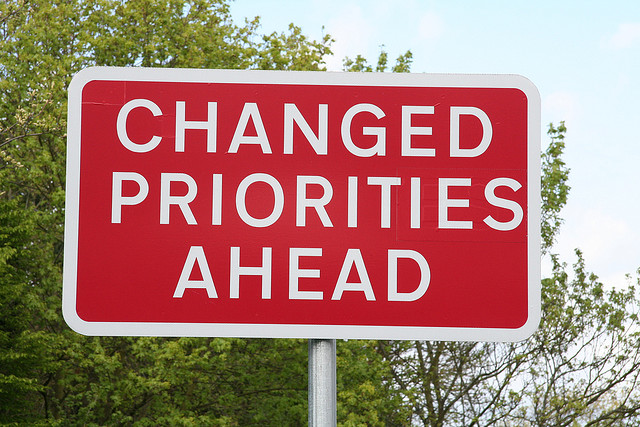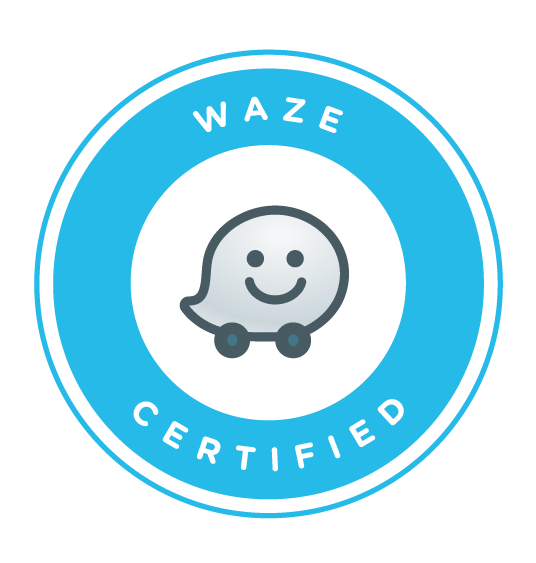When you start your business there are so many things to do from managing your accounts, to employing staff and possibly organising stock.
With so many tasks and few people to do them, usually just you. It’s important to get your priorities in order.
One area that can not only take up lots of time, but where you can spend money ineffectively is online.
The Advantages of Online Marketing
The great thing about marketing online is that you can reach many people relatively cheaply. The thing that you need to have in mind is that some elements of online marketing take time to mature. Whilst others can have more impact early on.
Marketing Priority List
The following list provides a framework around which you can plan the development of your online marketing.
1. Local Listings
No, the first item on the list isn’t your website. Whilst your website is a necessary component of your marketing efforts, it will take time to put together and take even more time to take effect.
As early as possible you should list your company on Google+ Local, formerly known as Google Places and Bing Local, which is powered by Nokia’s Primeplace.
By registering for both of these free services your business can appear in the search results, at a local level, a lot faster than your website could. You can include a diverse range of information including photos, video, opening hours and a link to your website.
For new businesses they usually require verification via a pin number sent by postcard to the business address. This may take a few weeks so is best done as early as possible.
Foursqaure will be your first social listing to acquire. You may not use this to its full potential immediately, but especially if you have a high street location its good to be on the map. By being on Foursquare users can promote your business for you and eventually you can use it to offer promotions.
Suffice to say for now you should just register for free and complete your listing. It will only take a few minutes and its another opportunity to get discovered early on.
2. Your Website
Now its time to sort your website. If you haven’t done so already I want you to take a step back before you have any grandiose plans and think CONTENT!
Whilst you’ll be eager to impress the world with a beautifully designed site, the truth is it won’t get found in search unless it has relevant content.
My advice would be to focus your budget on the copy writing rather than the design. This is your chance to beat the competition from day one. Unless you are a copywriter yourself, writing effective website copy that drives leads, builds interest and conversion is a skill well worth the investment.
Don’t build a complex website from day one. Ideally it should have a content management system so you can add pages and content without relying on a web developer. WordPress is a great platform for this and you’ll find lots of reasonably priced WordPress developers online.
Another advantage of WordPress is that with the use of the right theme, your website should be mobile friendly.
Just ensure that whoever builds your website integrates Google’s free Analytics and Webmaster Tools, this data will be invaluable later on.
Another thing to include is an email newsletter sign up option. You won’t be sending any emails just yet, but start collecting email addresses, with permission, as early as you can.
3. Pay Per Click Advertising
Once your website is live you need to start thinking about driving traffic to it.
Hopefully your copywriter will have done a great job of ensuring your content is search engine friendly. Even so this will take time to have an effect and there’s plenty of work to do on search later on.
For now the most immediate way to drive traffic is via Google Adwords.
You have a choice here dependant on your budget. You can either jump in and give it a go yourself if time allows or employ an Adwords consultant, like myself, to set up and run your campaign for you. Most should also be able to provide you with £75 worth of free clicks towards your first campaign.
Pay per click is not going to be cost effective for all businesses long term, and may be expensive for those in highly competitive sectors. But it can be used to build awareness of your business early on.
4. Search Engine Optimisation
By now your website should be up and your local listings in place. You may have run an Adwords campaign or two. Using the learning’s from your activity so far and the data you’ll have available in your Google Analytics account, you can begin optimising your website for search.
If you know little about search engine optimisation then SEOmoz has a great beginners guide to SEO. This is useful whether you’re intending on doing it yourself or outsourcing it. It will give you an overview of what’s involved and help you avoid mistakes that can get you penalised.
5. Content Marketing Plan
No we still haven’t reached Social Media yet!
To make your online presence interesting, to help with search rankings, and to give you something to say on social, you need content.
The biggest reason small businesses fail to compete online, and that their social media isn’t effective, is because they don’t have fresh and interesting content.
You’re going to need to think creatively here because I am sure time or budget will be a constraint, if not both. Look at the tasks you perform each day and look for opportunities to take photos, make a short video or write a couple of hundred words.
Keep up with latest events in your industry and pass comment on them. Keep a notebook to hand to jot down ideas and ensure you have a phone with a good camera for opportune photos.
Best of all make time once a week to sit down and reflect in writing, or via video, about your business or industry.
Can’t write? I couldn’t write that well when I started out but through practise and plenty of reading it improves. A great little book that improved my writing greatly was The Elements of Style by William Strunk. As relevant now as it was when it was written in the 1930’s!
I can’t stress how important this stage is. Get content working for you and you’ll be heads and shoulders above everyone else in your sector.
6. Email Marketing
You have some content, so now you have something to say and email marketing is a very cost effective way to say it. Also, your email list should have been building steadily since your website went live, so now is the time to start reaching out.
You’ll find plenty of email marketing applications to choose from, but I can highly recommend MailChimp. It has easy to use templates and integrates seamlessly with most websites. Best of all it’s free to use whilst you have less than 2,000 subscribers, and after that it’s still really cheap.
Put an email marketing plan together in line with your other marketing and your content plan. You’ll be able to track the success of your campaigns through MailChimp’s interface and your Google Analytics data.
7. Social Media
Once you have all the other elements of your marketing in place, this is the time to venture into to social media. You efforts here will be far more effective when you have content to share and you can drive people to your website or to sign up to your email list.
You will also know by now how much resource and budget you have available to devote to social. You need to be taking part on a daily basis in social media to maximise its ability to provide a return.
Which platforms to choose will be dependant on who you are trying to reach. Experiment, find out where you feel comfortable, and discover where you audience is.
Twitter, Facebook and LinkedIn should be your prime platforms for consideration:
- Twitter: For reach, to build authority & general networking
- Facebook: For certain age groups & consumers
- LinkedIn: For business to business & networking
There are many caveats here and it’s impossible to give definitive advise without knowledge of your business.
For some Google+, Pinterest and Instagram may be more relevant.
Do More of What Works
In general social media should be at the end of your priorities. Not because it doesn’t work, but because for a small business there is more effective marketing to be done early on that provides results in a shorter time frame.
You should continually measure your results and focus on what works for you. If things aren’t working either adjust your messaging or get advise.
Overall you need to enjoy running your business, and you should be looking to share that experience through your marketing.
Was there anything I missed or would you prioritise in any other way? Let me know in the comments below.






